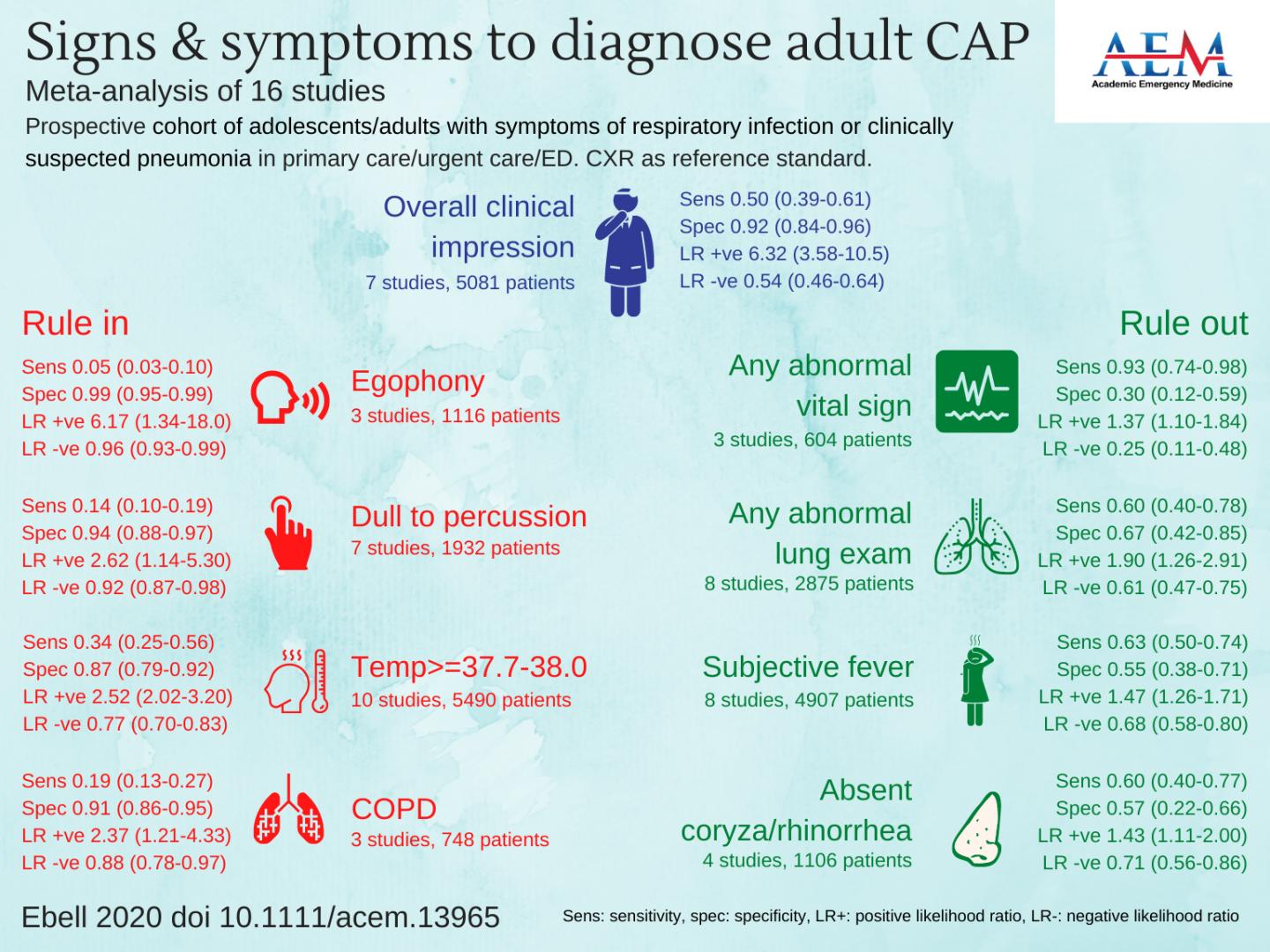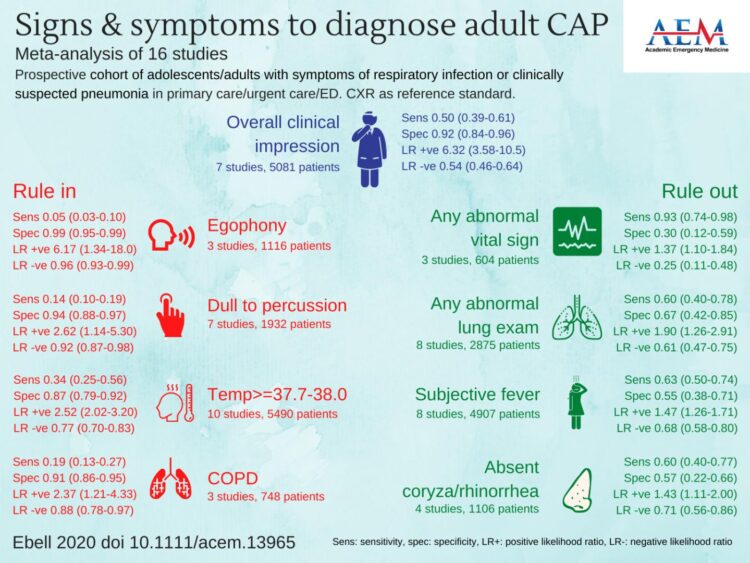
Credit: KIRSTY CHALLEN, B.SC., MBCHB, MRES, PH.D., LANCASHIRE TEACHING HOSPITALS, UNITED KINGDOM
DES PLAINES, IL — While the history and physical examination is important, only a few key signs and symptoms significantly change the underlying likelihood of community?acquired pneumonia (CAP). That is the conclusion of a study published in the July 2020 issue of Academic Emergency Medicine (AEM), a journal of the Society for Academic Emergency Medicine (SAEM).
The lead author of the study is Mark H. Ebell MD, MS, assistant professor in the department of emergency medicine at the University of Massachusetts Medical School-Baystate. The findings of the study are discussed with the author in a recent AEM podcast, “What’s the Signs and Symptoms of Pneumonia?”
The history and physical examination is a critical component of the evaluation of patients with acute cough; however, many individual signs and symptoms have limited value (especially when absent) and only a few key signs and symptoms significantly change the underlying likelihood of community?acquired pneumonia.
The study suggests that knowledge of the signs and symptoms most predictive of CAP can help physicians focus their evaluation and avoid inappropriate antibiotic use. The authors suggest that teaching and performing these high value elements of the physical examination be prioritized, with the goal of better targeting chest radiographs and ultimately antibiotics.
The authors further recommend that future research should be performed to validate promising clinical prediction rules and to integrate signs, symptoms, and point-of-care tests such as C?reactive protein and to explore novel approaches to the development and validation of these rules.
###
ABOUT ACADEMIC EMERGENCY MEDICINE
Academic Emergency Medicine, the monthly journal of Society for Academic Emergency Medicine, features the best in peer-reviewed, cutting-edge original research relevant to the practice and investigation of emergency care. The above study is published open access and can be downloaded by following the DOI link: 10.1111/acem.13965. Journalists wishing to interview the authors may contact Stacey Roseen at [email protected].
ABOUT THE SOCIETY FOR ACADEMIC EMERGENCY MEDICINE
SAEM is a 501(c)(3) not-for-profit organization dedicated to the improvement of care of the acutely ill and injured patient by leading the advancement of academic emergency medicine through education and research, advocacy, and professional development. To learn more, visit saem.org.
Media Contact
Stacey Roseen
[email protected]
Related Journal Article
http://dx.





